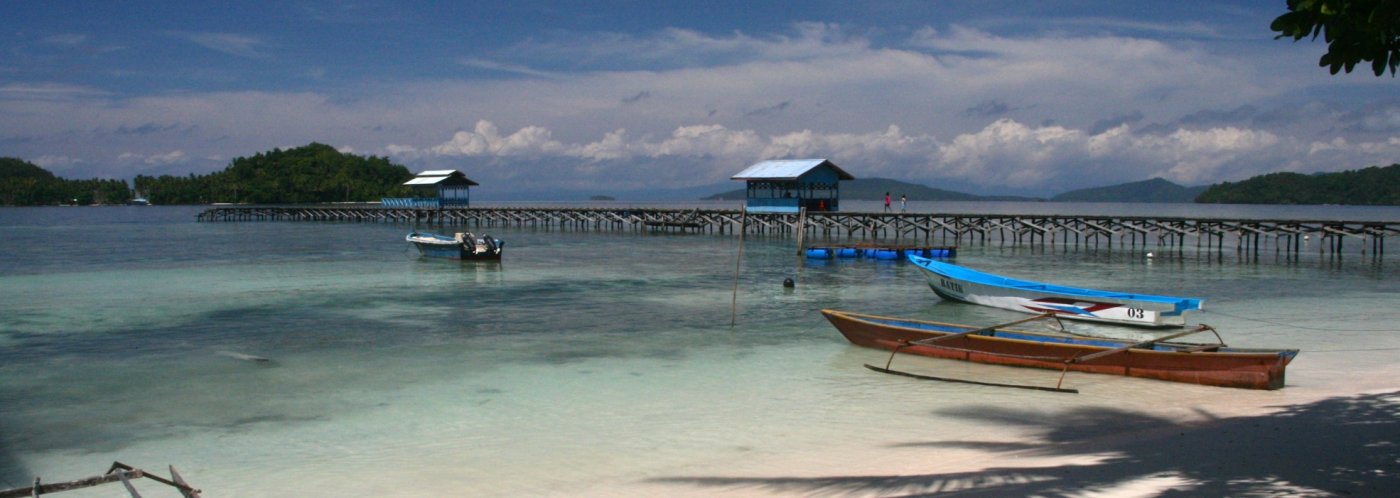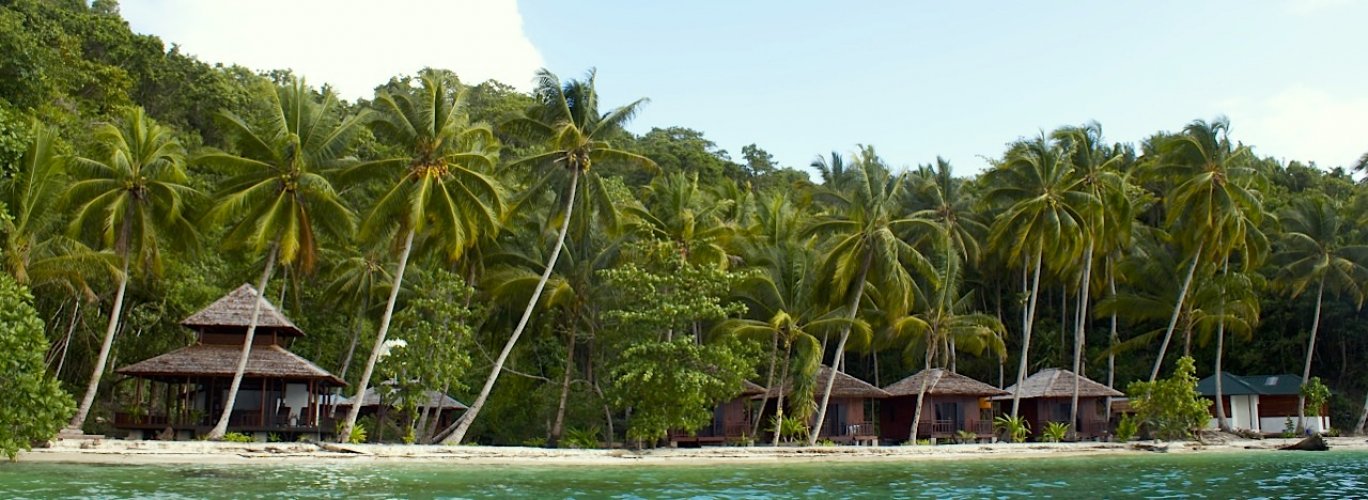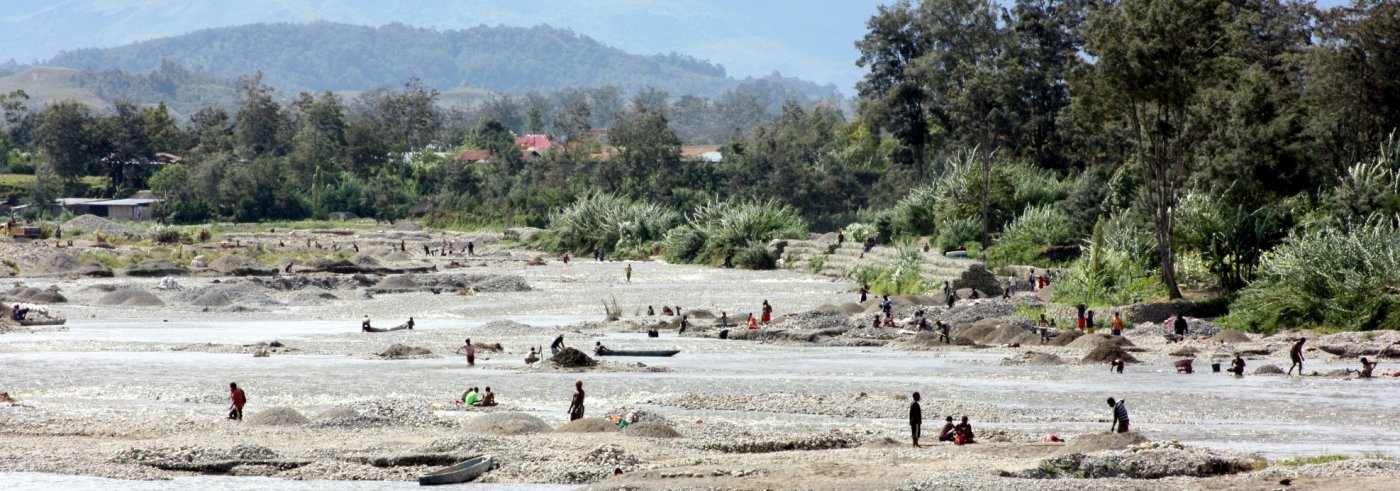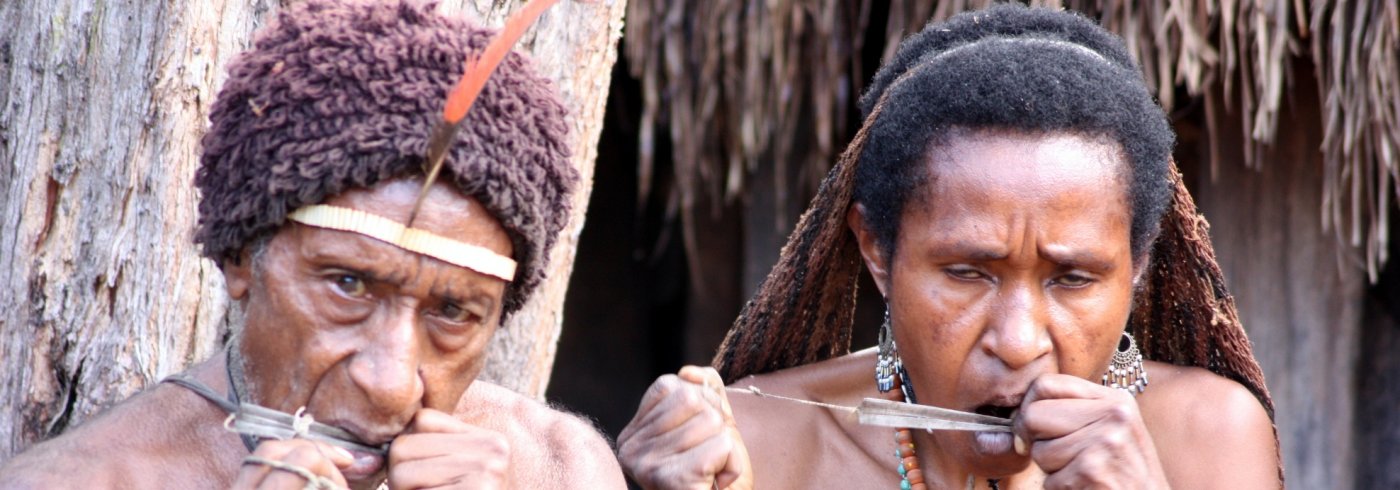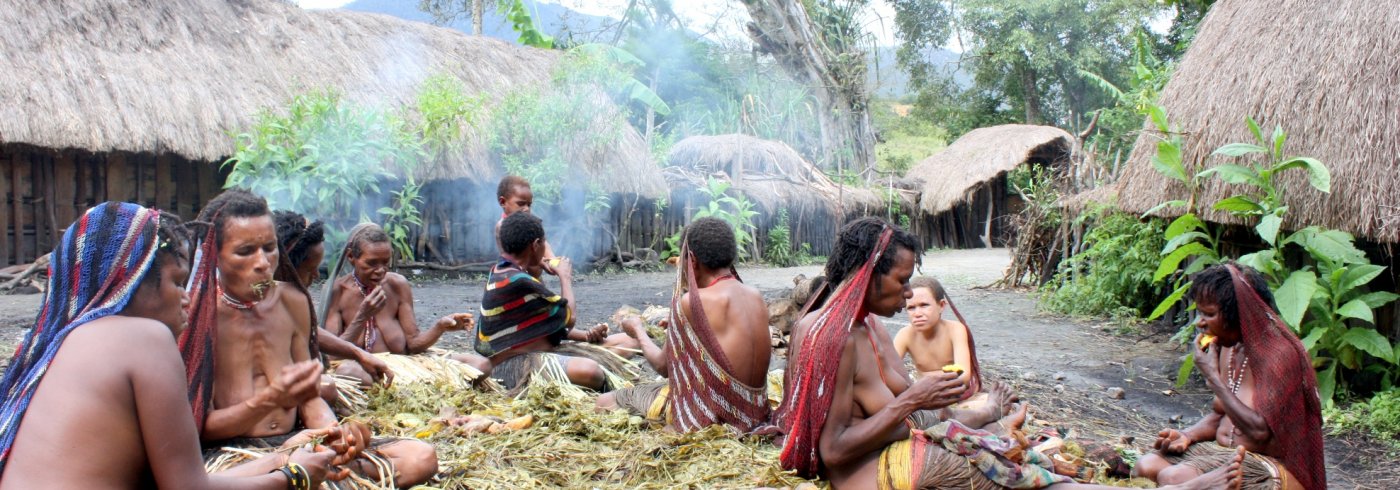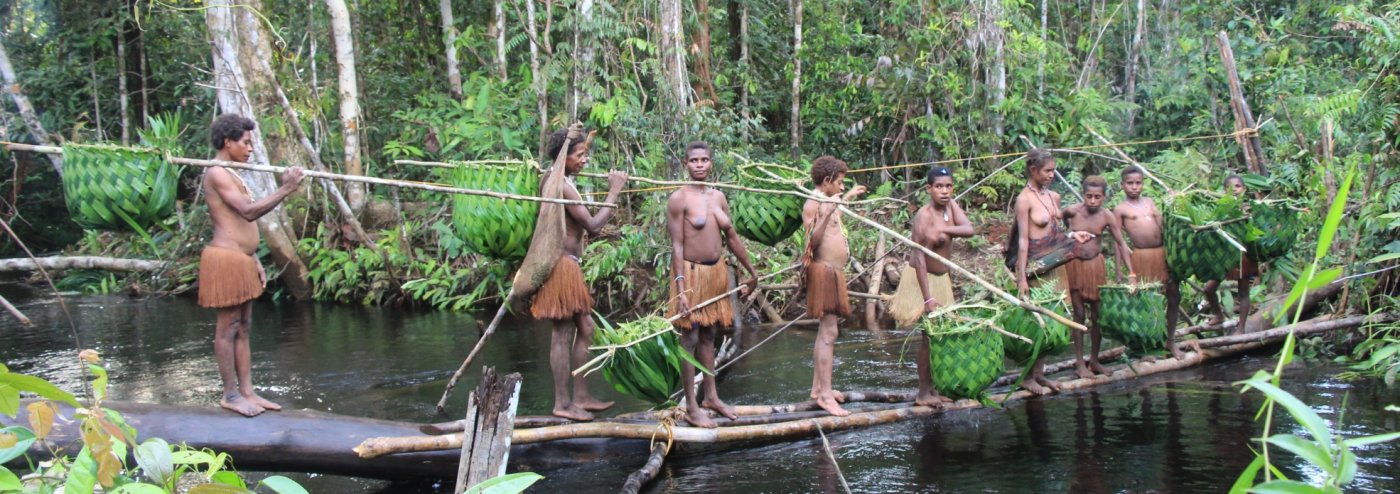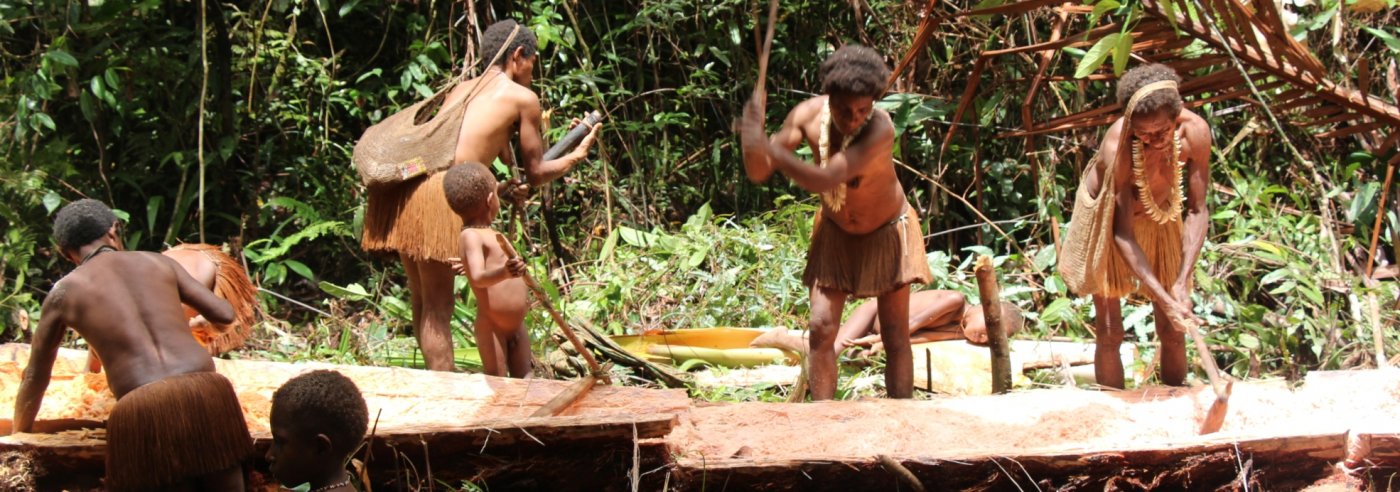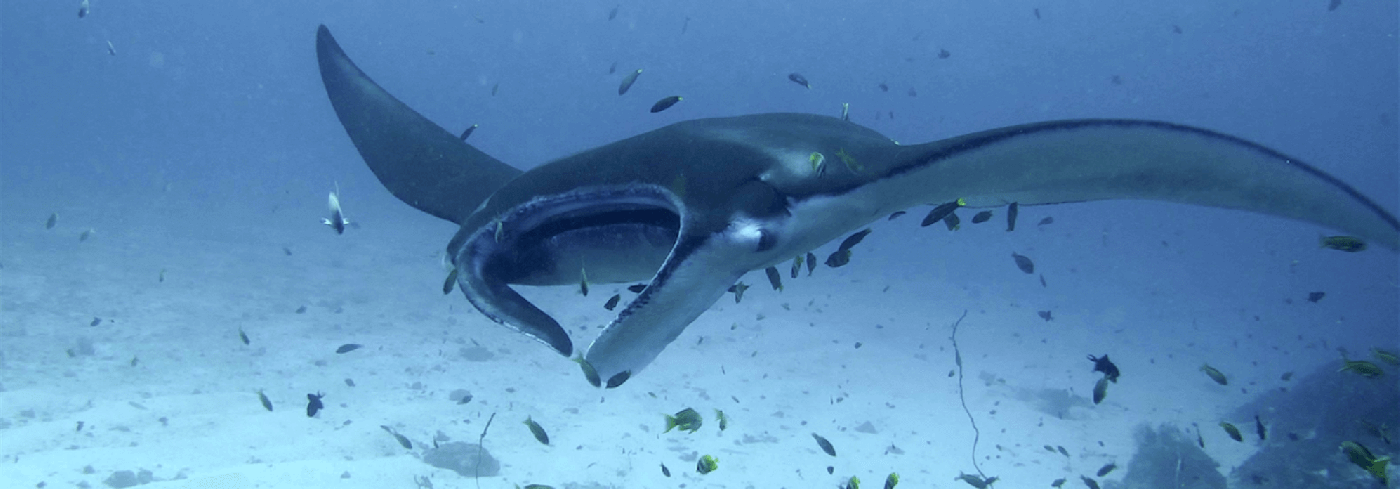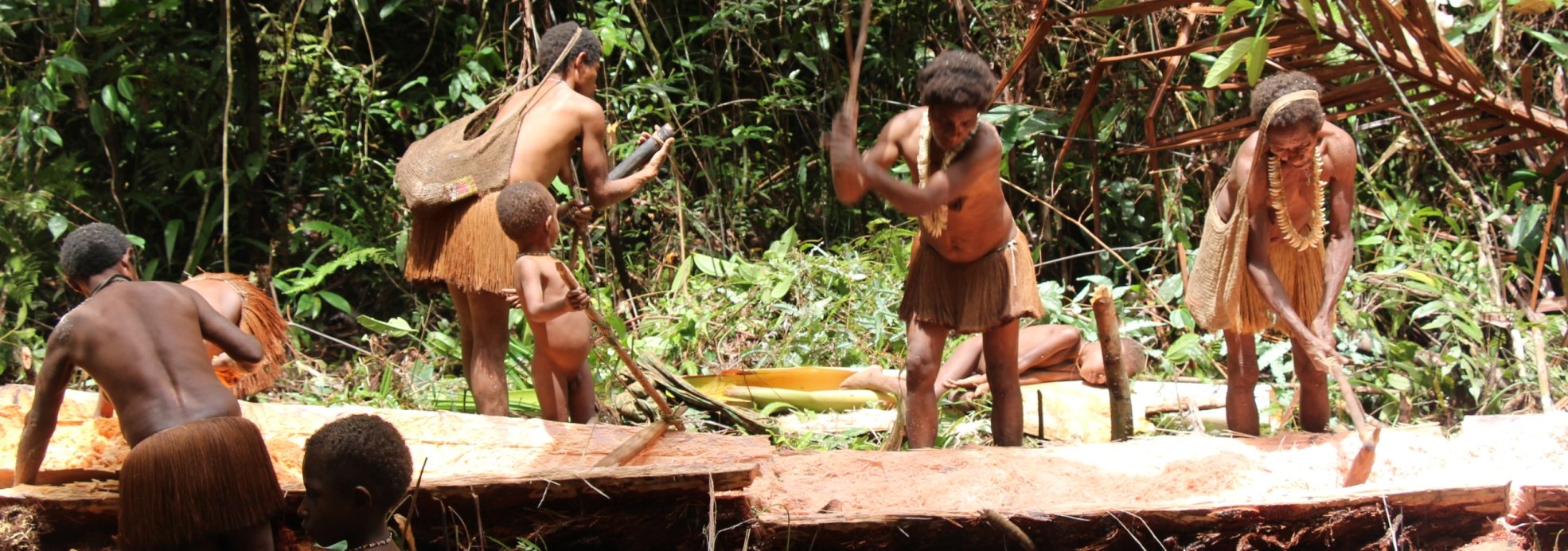Offerte
OfferteTour module round trip Adventurous Papua - the Korowai
The Korowai tour module is our most adventurous round trip. In a mixture of short flights, boat trips and sometimes tough walks you cross the jungle to the Korowai tribes that live high above the ground in tree houses.
You sleep in small tents and sometimes in local primitive accommodations. Besides a guide you will also be accompanied by porters and a cook during your trip.
You need to be in good physical condition and have a great deal of adaptability as you will get into not everyday situations.
The round trip starts and ends in Jayapura. If you wish you can add the Baliem valley tour module to (before or after) your Korowai round trip.
You sleep in small tents and sometimes in local primitive accommodations. Besides a guide you will also be accompanied by porters and a cook during your trip.
You need to be in good physical condition and have a great deal of adaptability as you will get into not everyday situations.
The round trip starts and ends in Jayapura. If you wish you can add the Baliem valley tour module to (before or after) your Korowai round trip.
Target prices
TEMPORARY NOT AVAILABLE
Included:
•Overnight stays with breakfast, lunch and dinner
•Transfers
• English speaking guide
Not included:
. Flights
. Local airport tax
. Optional excursions
•Tips and personal expenses
•Travel and cancellation insurance
•Booking fee and contribution Calamiteitenfonds €30 per booking
•SGR contribution € 5 per person
•CO2 compensation € 22 per person
•Overnight stays with breakfast, lunch and dinner
•Transfers
• English speaking guide
Not included:
. Flights
. Local airport tax
. Optional excursions
•Tips and personal expenses
•Travel and cancellation insurance
•Booking fee and contribution Calamiteitenfonds €30 per booking
•SGR contribution € 5 per person
•CO2 compensation € 22 per person
Offerte
OfferteDay 1 Arrival Jayapura
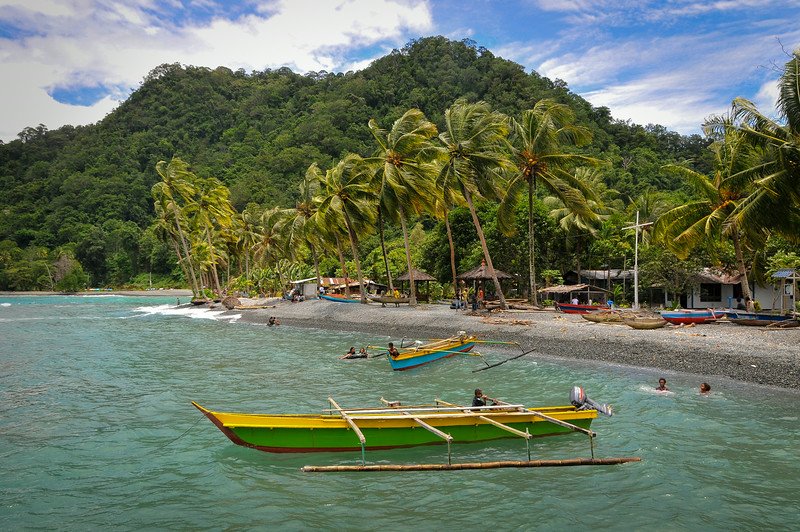
Today you arrive at Sentani airport, Jayapura. Your driver is waiting for you outside the airport and drives you to your hotel in Sentani or the Suwae resort in Depapre.
Day 2 Departure to Dekai
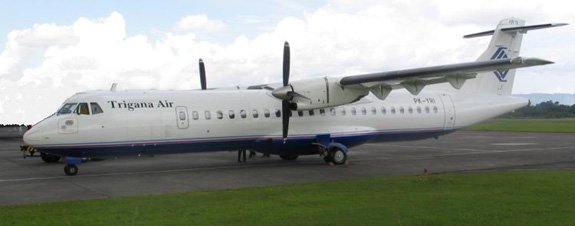
In the morning you leave with the approximately one hour Trigana flight to Dekai.
Dekai is modernizing after the greater autonomy of the province of Papua and the Manimo tribe is now fairly civilized.
While the guide is taking care of the final preparations you have the afternoon for yourselves. Overnight stay in a simple hotel.
Filght Jayapura-Wamena-Dekai-Wamena-Jayapura
Flight with Trigana Air
5 Daily departures in the morning from Jayapura:
Max weight: 10 kg.
Extra weight ca € 5 per kg to be paid on the spot
NB: Trigana Air figures on the list of flight companies that are not allowed to fly in European airspace.
Day 3 A day on the Brazza river
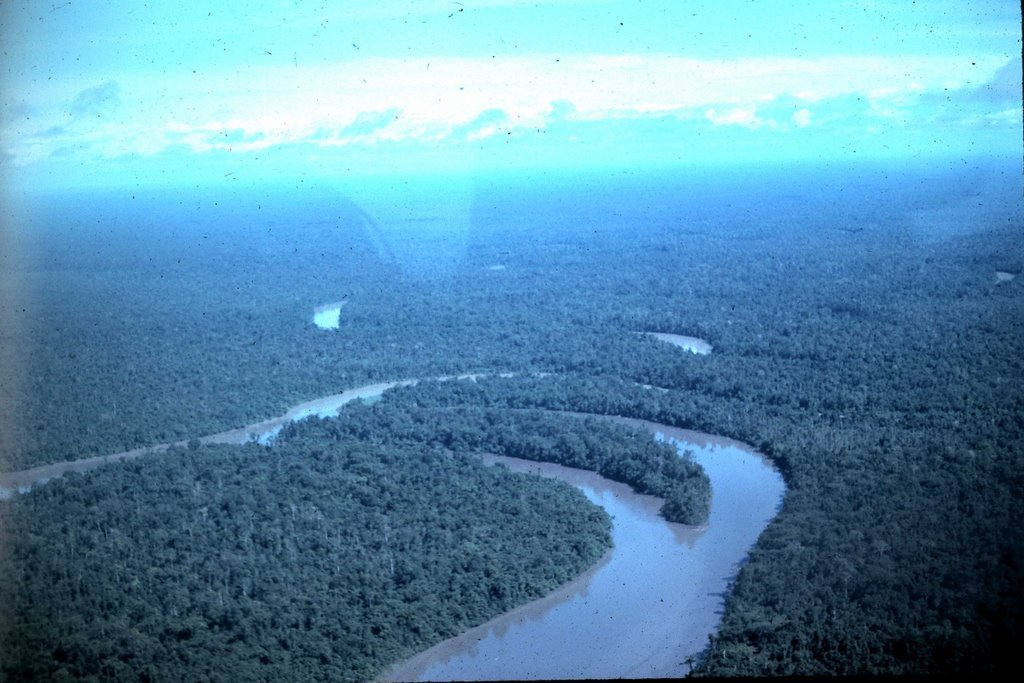
After breakfast, on the back of a motorcycle over a bad road you’ll be driven to the ‘port’ of Lopon.
Here starts the trip of around 7 hours over the Brazza river. On our way we stop at some villages of the Citak Mitak tribes. They live along the river on fish and what the jungle behind their huts has to offer. Since there is more 'traffic' on the Brazza river these tribes have been westernising too and they often wear normal clothes.
In the afternoon we arrive in Muara Siretz. We overnight in the village in tents.
Day 4 Trekking to the Korowai
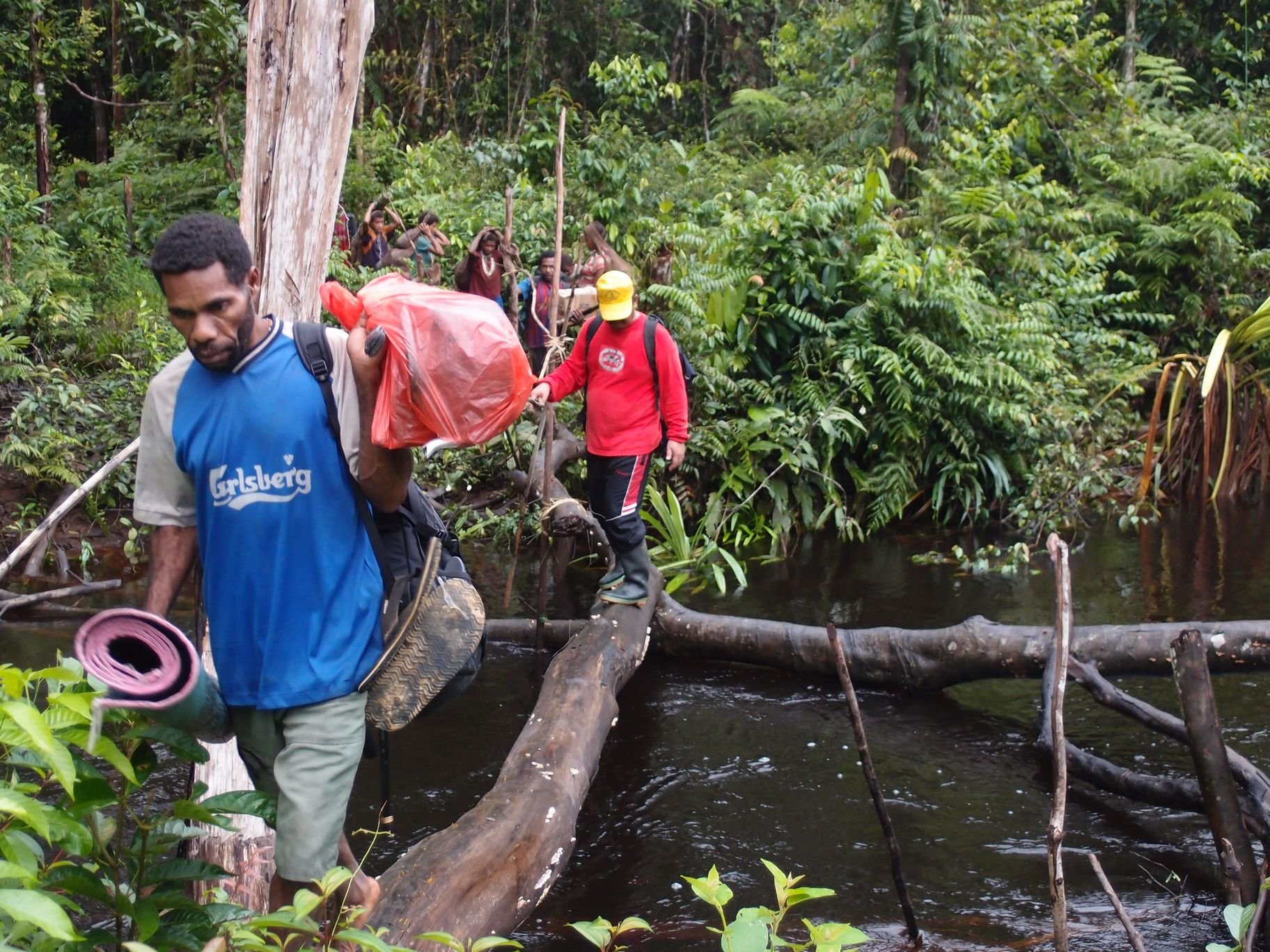
The last boat trip takes four hours and then we reach the village Mabul. This is the first village of the Korowai that we visit.
While the guide is announcing our visit to the chief of the tribe and arranges some porters we’ve got time to have a look around the village. The Korowai in Mabul work as farmers or hunters.
Together with the porters we walk at a quiet pace in about three hours to the Korowai villages in the jungle. In every village we have to negotiate with the chief. If he accepts our presents we are allowed to enter the domain and you will sit amid the local people, as if you had travelled centuries back in time.
Overnight stay in a tent (if you wish in a tent in a treehouse).
Day 5 Living with the Korowai
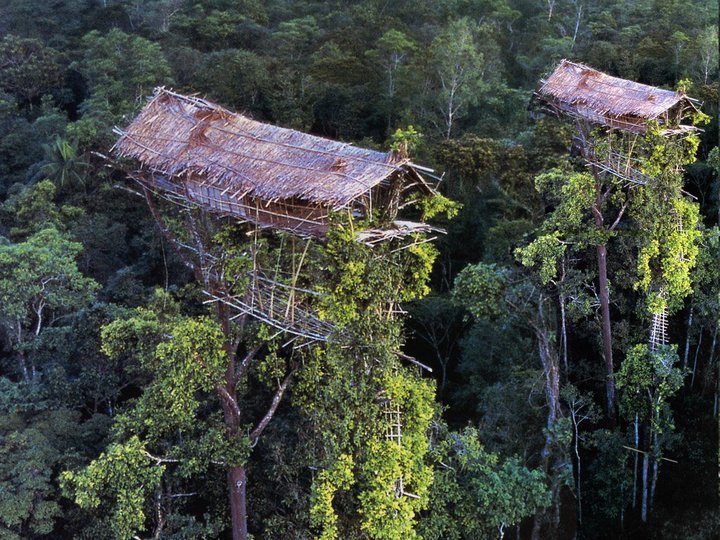
We spend two full days experiencing daily life with the Korowai. You can join them when they go hunting or for the sago harvest.
The jungle is here warm and swampy. Sago is the primary food resource and is complemented with fish and meat, from the hunting. And of course fruit and vegetables from the jungle.
Day 6 Living with the Korowai
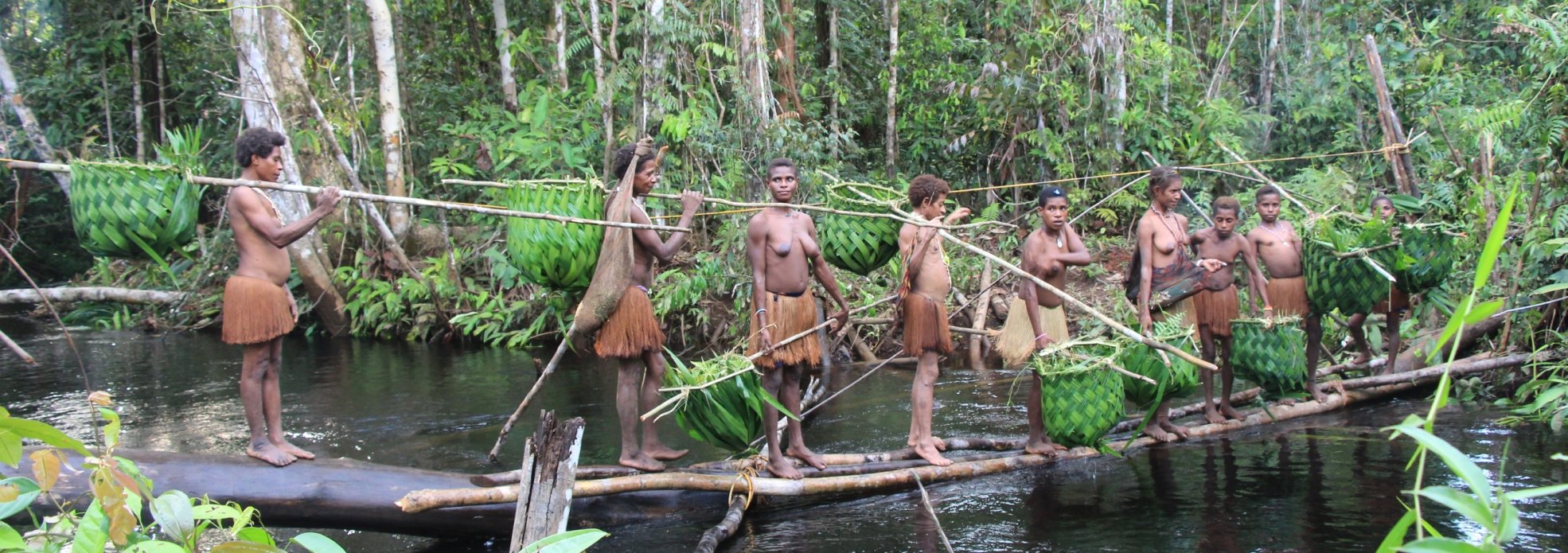
Another day among this primitive tribe. You’ll be invited to the sago harvest or catch fish. Of course you’ll also witness their traditional dances and music.
The people here enjoy themselves as much as you do.
Day 7 Back to Mabul
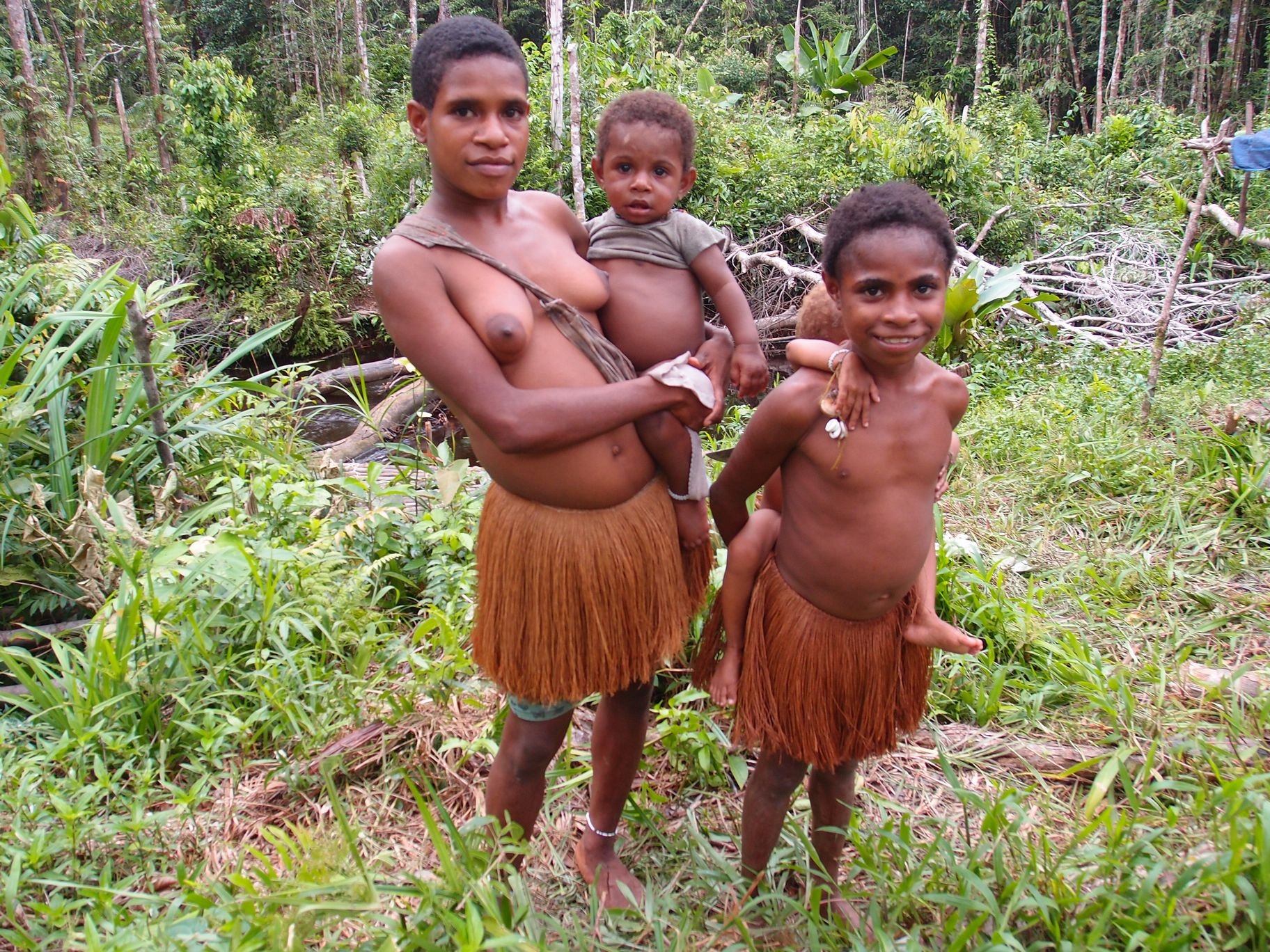
We say goodbye to the Korowai in the jungle and walk and sail back to Mabul
Day 8 Brazza river to Dekai
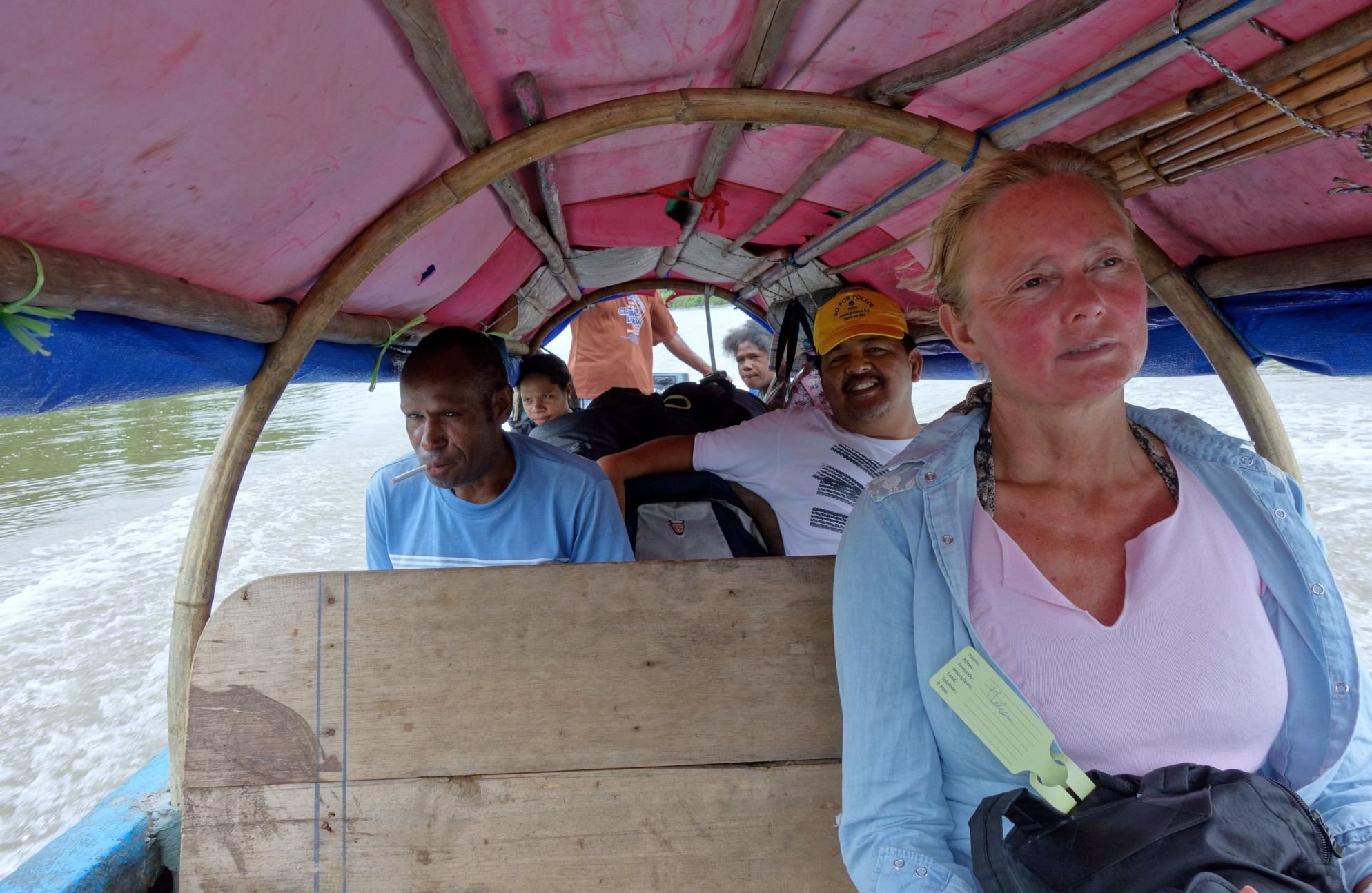
In reversed order we now sail a full day against the current. In the late afternoon we arrive in Lopon, where you get on the back of the motorcycle again and will be driven to Dekai.
Day 9 Back to Wamena
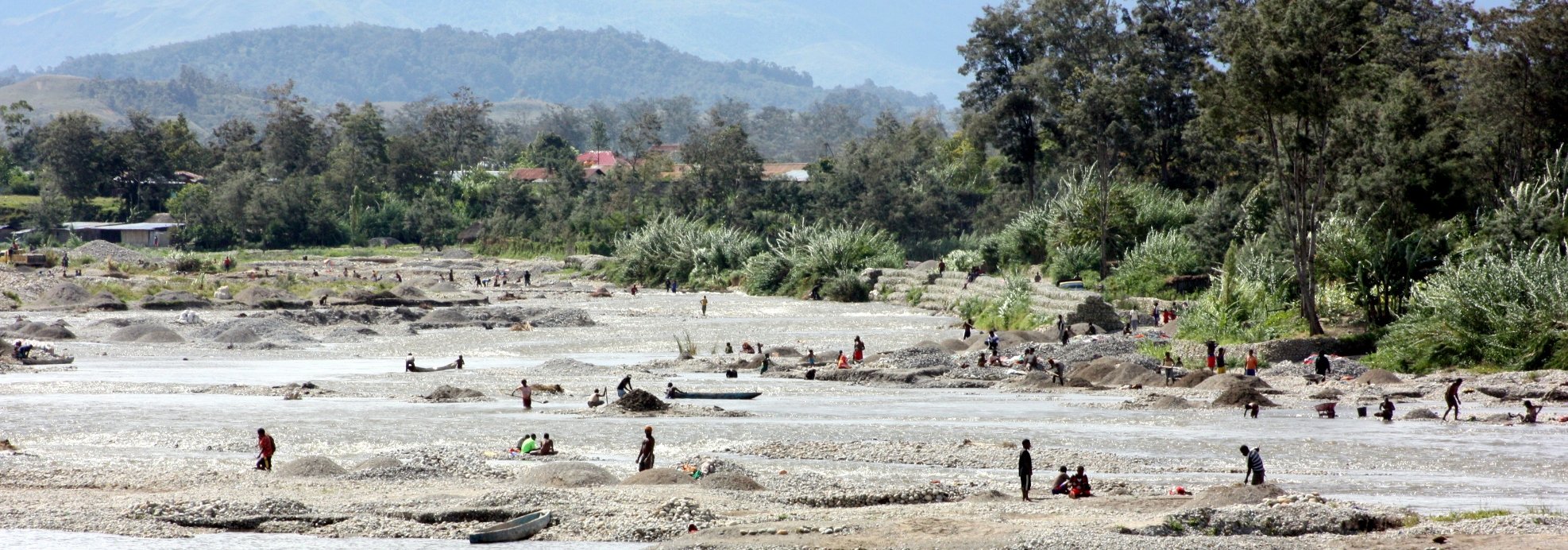
From Dekai we fly with Trigana airlines to Wamena, a thirty minute flight.
From Wamena we start our 3 day trip through the valley.
We get in the car with our guide, porters and cook and drive to the village Sogokmo.
Over hilly terrain we walk in an easy pace via the hills of Hesegem to Kilise. On the way we’ll meet local people at work and enjoy the beautiful setting of the valley.
In Kilise we stay in a local accommodation.
Instead of a more day trekking in the Baliem valley you can also choose for day trips starting from hotel Pilamo in the city Wamena.
Day 10 From Kilise to Wuserum
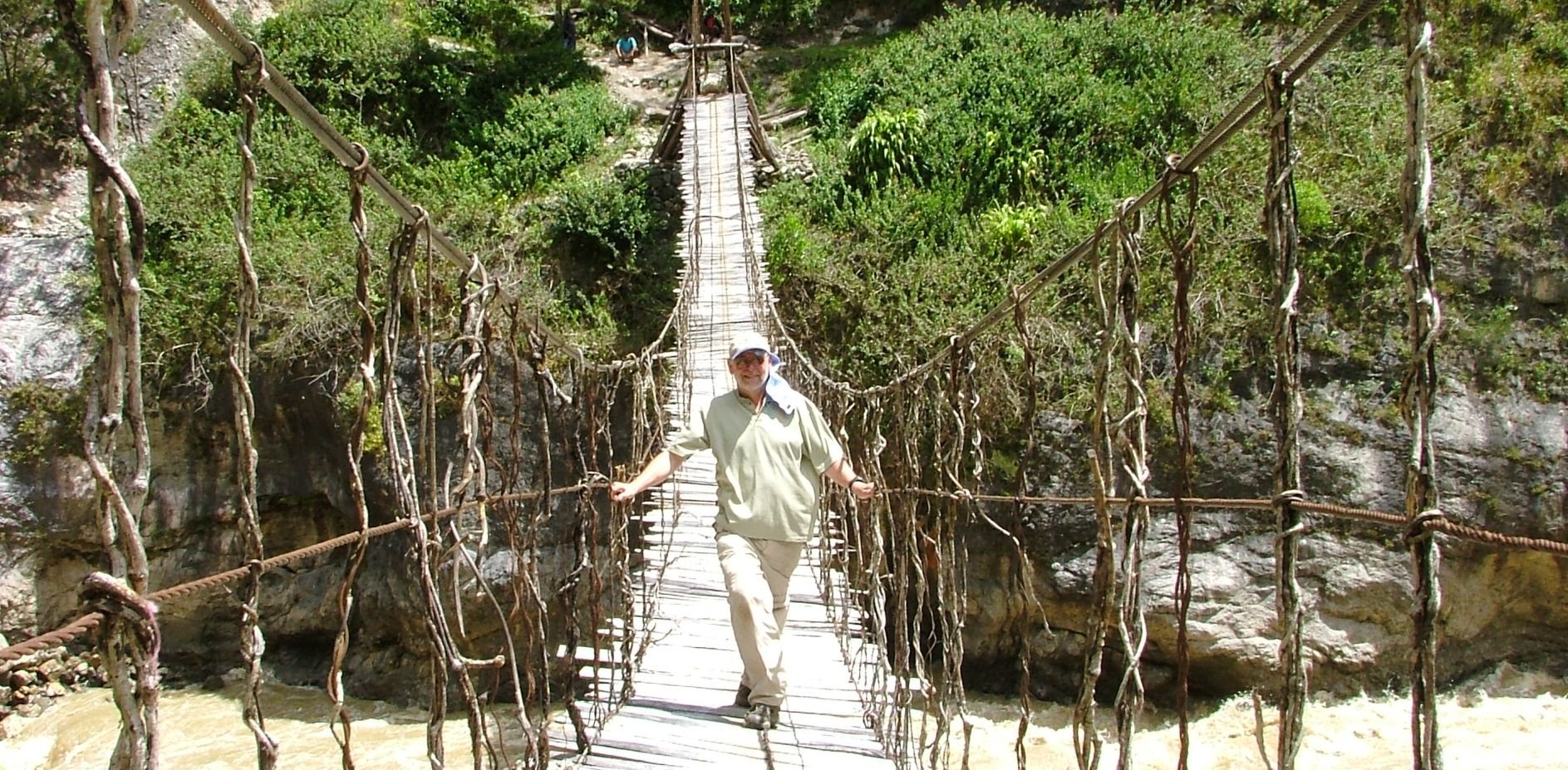
Today our trekking gets a bit tougher, over sometimes slippery paths we bridge a difference in height of more than 1500 meter. We criss-cross the Baliem river sometimes over small authentic hanging bridges. On the way we’ve plenty of time to enjoy the nature and of course the local people still wearing traditional Kotekas (penis gourds) or grass skirts.
The trekking takes ca 5 hours
Day 11 Pig festival in Jiwika
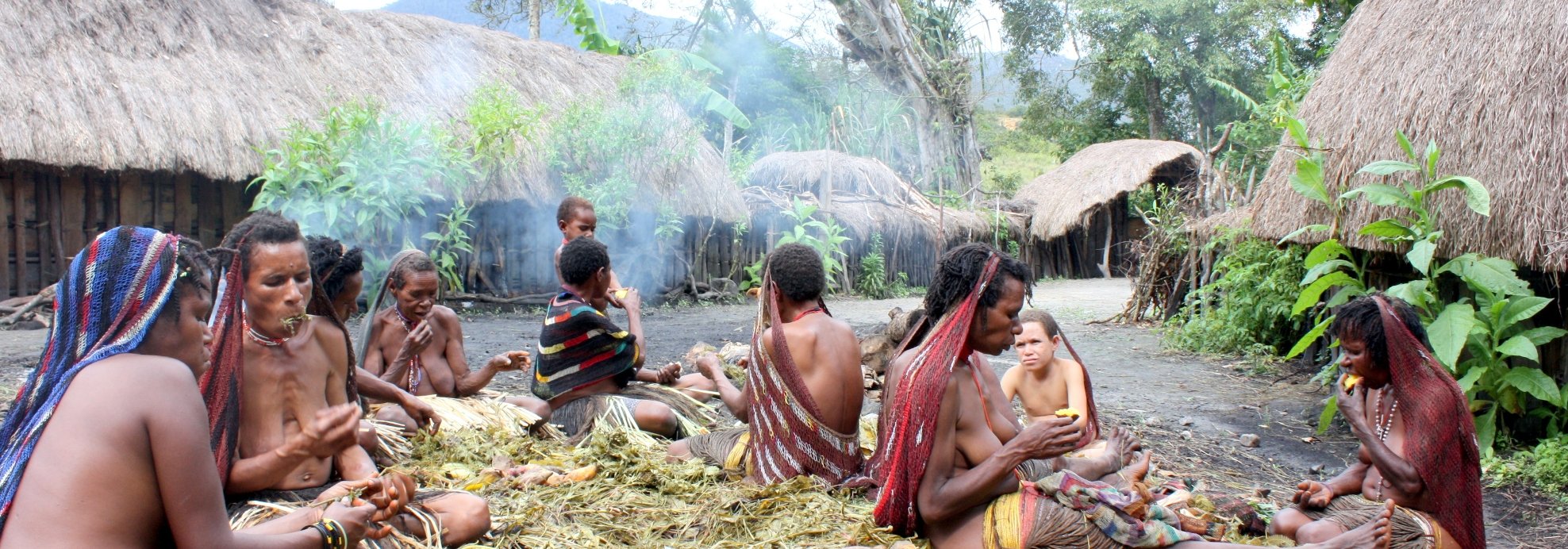
After breakfast an easy about 3 hour trekking to the Kurima subdistrict.
Here, the Dani women sell their local products along the path or the road. We arrive in Wamena, where the car is waiting and drives us to Jiwika, in the north of the valley.
In Jiwika we visit the 250 year-old Mummy (most local people here are now quite used to tourists and won’t fail to try to sell you something!).
Then we walk another good 15 minutes to the village Anemoigi where we will see the Dani war dance and the traditional Pig Festival. During this ceremony the custom is to share the meal with the Dani.
After the ceremony we go back to Wamena. Overnight stay in the Pilamo hotel.
Day 12 Back to Jayapura
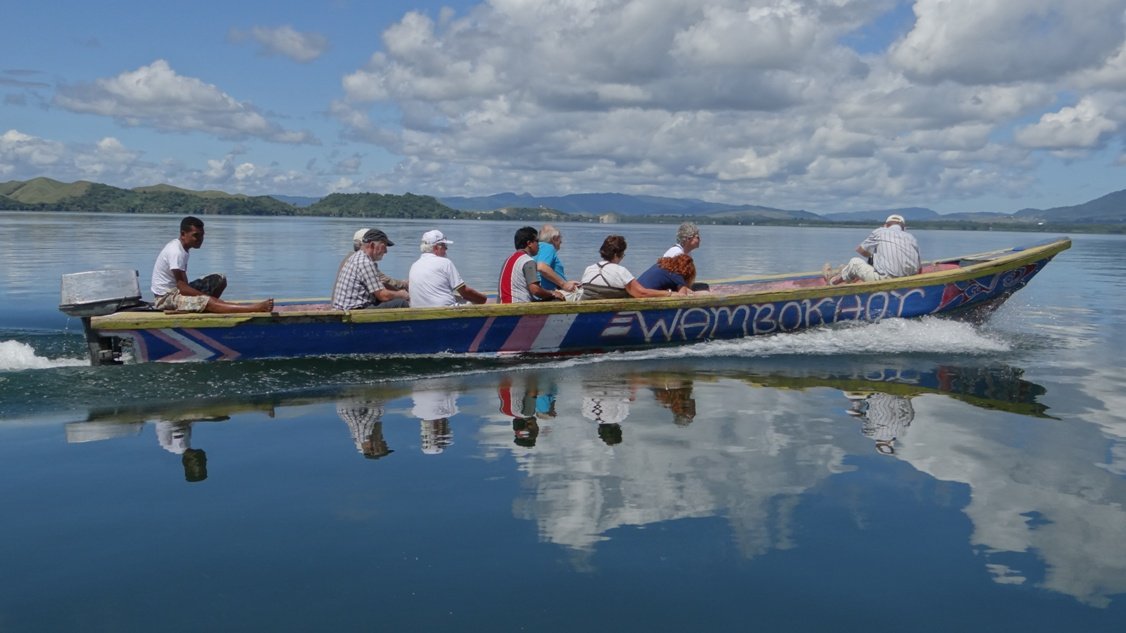
After breakfast we leave the hotel and take the Trigana flight from Wamena, back to Jayapura.
After arrival, we make an excursion to the Mc Arthur monument and a trip over Lake Sentani. After lunch we visit the capital city Jayapura, former Hollandia and visit there a museum, the local market and the remains of the colonial era.
Overnight stay in Jayapura city, Sentani or Depapre.
Day 13 Departure from Jayapura
After breakfast your driver will bring you to the airport for your next destination.
Offerte
OfferteOfferte
OfferteKorowai region

Korowai
The area of the Korowai tribes is an area of over 500 square kilometers northwest of Upper Digul. It is a difficult to reach swampy rainforest. Trips to the Korowai are by boat, usually across the Brazza River from Dekai, or from Kepi.The approximately 3,000 Korowai live in small settlements in tree houses. Since the end of the last century, villages have also been built along the rivers, reducing the number of settlements. The Korowai live from nature. The sago palm is the most important supplier. In addition, there is a bow and arrow hunt for wild boars and fishing in the small streams.
The tree houses are located at a height of 15 to 50 meters and protect the inhabitants from vermin, game and hostile attacks. The ladder is a dried and notched tree trunk and vibrates with every step that is taken, thus alerting residents when someone is climbing up.
If you want to visit the Korowai you have to take into account very primitive overnight stays (at the Korowai in a tent or in a tree house). In addition to a reasonable condition, you must also have a great deal of adaptability. After the long boat trip on the Brazza river, a trek of 3 to 5 hours follows through the swampy jungle to the Korowai settlement. In addition to a guide, a cook and porters go along on a Korowai expedition. A Korowai expedition can be combined with a visit to the Baliem Valley or the Asmat region.
Wamena
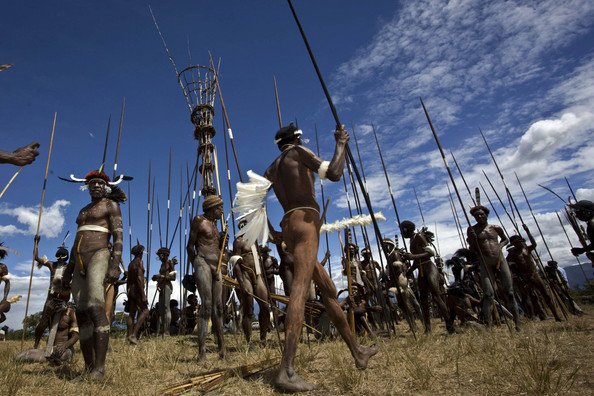
Wamena
The Baliem Valley is located on a plateau in the province of Papua. The valley is located at an altitude of about 1,600 meters, making it a lot cooler than at sea level. Wamena is the capital of the Baliem.The town has just under 15,000 inhabitants and is often the base for excursions and treks through the Baliem Valley. The airport has several daily flights to Jayapura and daily to Timika and Dekai (towards Korowai). Be sure to visit the Pasar Jibama market here.
The valley itself measures approximately 20 x 80 kilometers and is the habitat of the Dani tribe. The Lani and Yali live at a somewhat greater distance from Wamena. The basic food in the valley is the sweet potato. Rice doesn't grow here. Furthermore, vegetables are grown and pigs are kept (and cherished!).
A trip to the Baliem Valley is like a trip with the time machine. The population lives very primitively in small bead villages with at most ten mud huts with thatched roofs and a large communal kitchen. The pigs also often have one of the huts. The men usually only walk with a koteka (penis sheath) and the women only wear grass skirts.
It is wonderful to walk in the Baliem Valley. Enthusiasts can take a multi-day trekking, but the day trips from Wamena also invite you to explore the valley. At the village of Sogokmo you cross the river via a suspension bridge and walk through the sweet potato fields past several traditional villages. At the village of Jiwika you can climb to a traditional salt mine and at Kurulu you come face to face with the famous ancient mummy of the Dugum clan. You can also view such a mummy at Alkima, but it has now become a touristic event.
It is also special to spend part of the day at the Pig Festival. Normally the party is held during a wedding, but the residents are proud of their traditions and are happy to show it to tourists. A pig is slaughtered with a bow and arrow and stewed on hot stones. As a guest you will be offered a piece of meat with vegetables. Tasty is different, but just to be polite you grab a bite and then enjoy the lunch that your guide has brought.
The Baliem Festival takes place annually in the month of August. The three Dani, Lani and Yali tribes wage war for three days, but now with different rules of the game than before.
Baliem valley - Tribes
The original population are the Dani people, a well-known tribe in Papua. The Dani are known for their war-minded attitude. When the valley was discovered, people noticed that everywhere high, slim towers had been built. These were lookouts to warn the villagers that hostile clans were approaching. These lookouts were little by little put down when the area got under Dutch administration and war-making was forbidden. The Dani of the Baliem valley are related to the tribes from the mountains west of the valley, that are called western Dani or Lani. Their area is more densely populated than the area of the Dani. A third tribe are the Yali, who live in sparsely populated areas high on the mountain flanks of the Jayawijayain mountain chain.Under Indonesian administration in the 70’s the situation became tense with the Dani, who were considered as underdeveloped people. In the early seventies the Indonesian government tried with 'Operation Koteka' to motivate the Dani to change their Koteka for clothes and to house them in modern square houses. Many Indonesian soldiers, who had to carry out the policy, regarded the Dani as 'savages' (little more than animals, an attitude that’s still alive among many Indonesians) and treated them very badly. Opposing Dani were sometimes even killed. In 1977 the Dani rebelled led by the Organisasi Papua Merdeka, the Dani fought with bow and arrow against Indonesian soldiers with rockets, attack planes and helicopters with which they bombed the Dani villages. It is estimated that 500 Dani died during the fighting, that was concentrated around the villages Pyramid and Bokondini in the north of the valley. 'Operation Koteka' was a complete failure.
In the nineties a new fight broke out for independence, which also was put down violently by the Indonesian government, that in 1997 even tried to put up the tribes against each other and thus stay out of range itself. Until the middle of the 20th century the valley was closed territory. A lot of Indonesian government officials still consider the valley as ‘the end of the world’.
(Source: Wikipedia)

